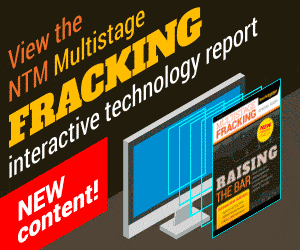Oilpatch Sees Advantage In Digital Oilfield Technology, But Remains Tentative About Adoption
- Published: Wednesday, 21 October 2015
- Author: Daily News
The application of various connected digital technologies may offer oil and gas companies the opportunity to improve efficiencies and cut costs, advance worker health and safety, and reduce their environmental footprint, but they remain a hard sell in today’s low oil and gas price environment.
A survey of Canadian oil and gas industry professionals for their views about the digital oilfield ranked 10 different use cases for their perceived return on investment (ROI), technological maturity and companies’ readiness to adopt them.
The survey, conducted by JuneWarren-Nickle’s Energy Group, GE and Accenture, found that on average, all of the use cases were considered to have comparable or better ROI compared to other uses of capital. But their perceived level of technological maturity varied considerably among use cases, while the perceived readiness for adoption lagged behind the perceived maturity of technologies for commercial application.
(The full Digital Oilfield Outlook Report will be released Oct. 27 at the Canadian Energy Technology Forum at the BMO Centre in Calgary.)
In order of rank (based on combined ROI, technological maturity and organizational readiness to adopt), the 10 use cases included:
1 Fleet Management
2 Field Productivity
3 Production Asset Optimization
4 Predictive Maintenance
5 Biometric Monitoring
6 Remote Asset Monitoring
7 Remote Asset Inspection
8 Remote Asset Operations
9 In-Field Manufacturing
10 Automated Production Asset Optimization
Several reasons were given as to what barriers exist to delay digital oilfield technology adoption, chief among them being budget constraints, existence of organizational barriers and concerns about cybersecurity.
Within its own bailiwick, the oilpatch is acknowledged to be a leader in innovation and high tech capabilities. The industry’s continued expansion into frontier areas such as ultra deepwater basins, solving the challenge of economic production from the oilsands and its ability to reinvent itself through advances in horizontal drilling and multistage fracturing—which made the shale gas and tight oil revolution possible—are testament to the industry’s technological savvy.
But outside of such areas of expertise, the industry was found in the survey to be more hesitant in its ability to assess and take up the sorts of digital technologies associated with the Internet of Things and the Industrial Internet, perhaps because such digital technologies tend to be cross-disciplinary and not confined to a departmentalized approach to technology development. They often require a more organization-wide approach and an openness to doing business in entirely new ways.
When queried about specific use cases, oilpatch professionals often indicated they had insufficient knowledge to comment on them, indicating a lack of awareness of the technologies’ potential application and benefits, and suggesting that may be the first barrier that needs to be overcome in adoption of such technologies.
Enabled by technologies such as smart sensors, wireless connectivity, cloud computing and data analytics, digital technology and the Internet of Things are engendering transformational change in other sectors, like telecommunications, transportation, the media and consumer electronics in the form of smart devices and applications. The Internet of Things is expected to continue to grow rapidly, adding trillions of dollars of value to the global economy in the coming years. Companies in all sectors of the economy can hardly afford to be left behind.
To learn more about digital oil, plan to attend the Canadian Energy Technology Forum (CETF), a unique industry event that explores the technological and operational foundation of the digital oilfield. The forum features innovation leaders who have increased revenue, improved operating margins and enhanced asset efficiencies by leveraging digital oilfield technology. CETF takes place October 27 at the BMO Centre in Calgary. Visit energytechforum.ca for more information.
-NTM-



